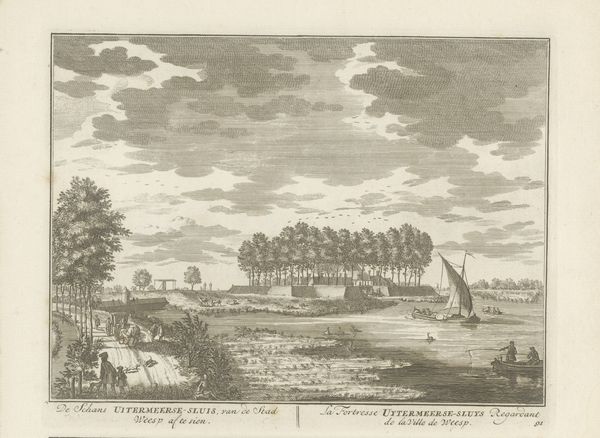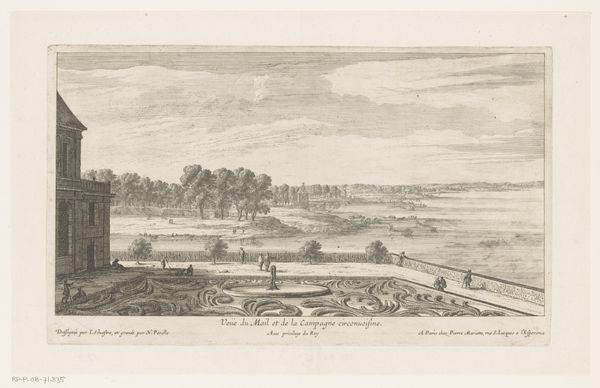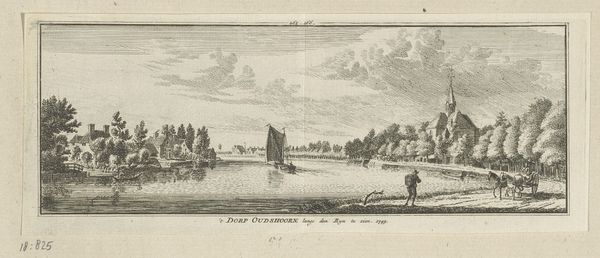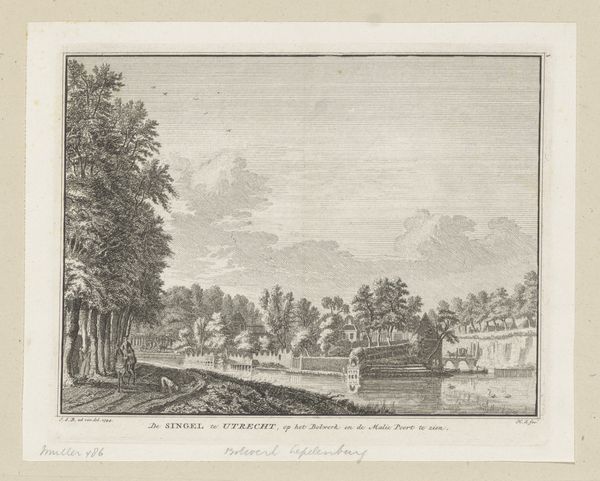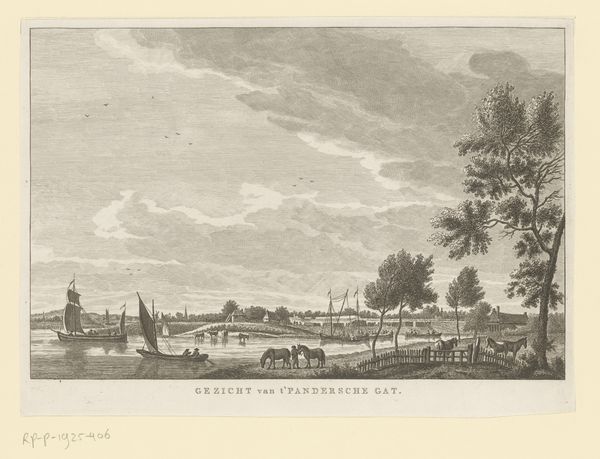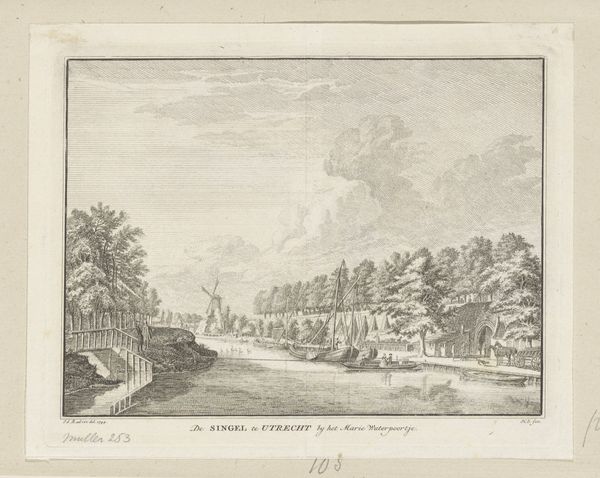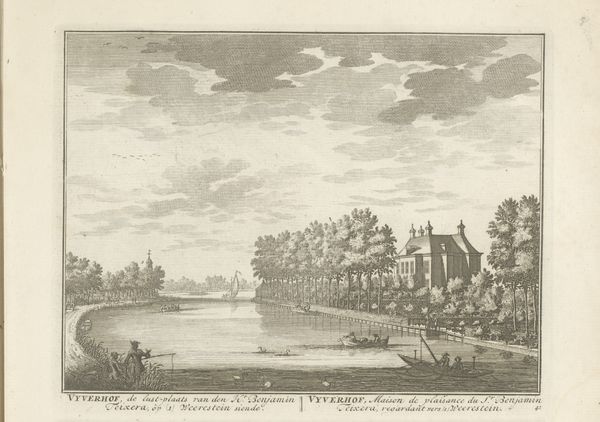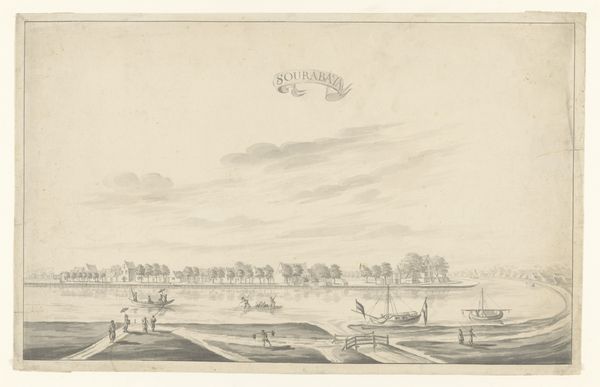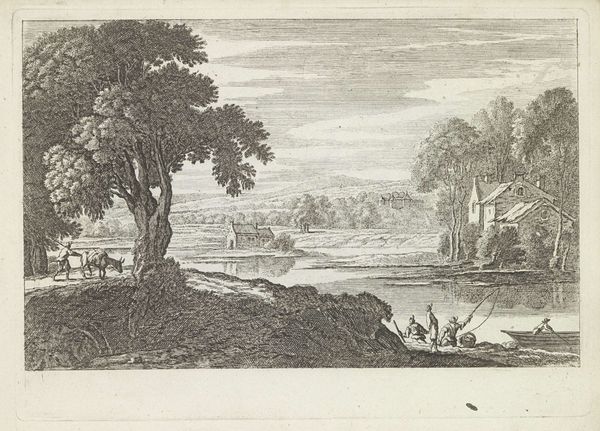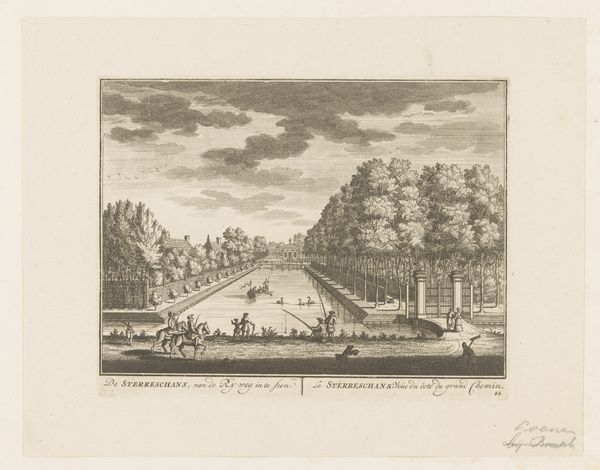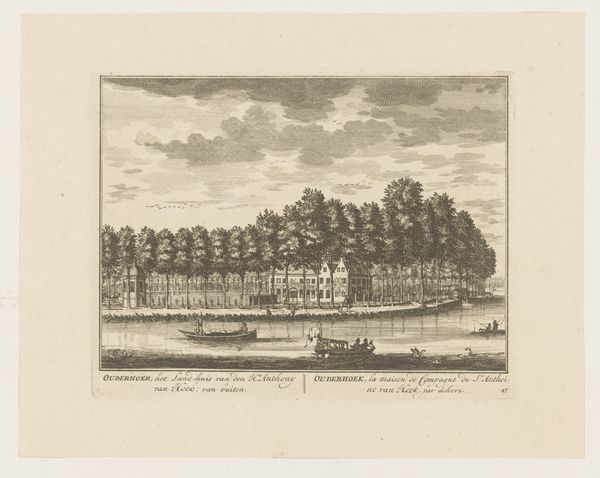
Dimensions: height 85 mm, width 213 mm
Copyright: Rijks Museum: Open Domain
Editor: This is "Gezicht op de Wierickerschans bij Bodegrave, 1749" by Hendrik Spilman, dating somewhere between 1750 and 1792. It's an engraving, and the level of detail is incredible! I’m curious about the subject matter, but what particularly jumps out to you? Curator: Considering this print's production in the 18th century, it's key to consider its role within the expanding print culture. How did the relatively cheap material of the engraving allow for broader consumption of images of fortifications like this? Think of the military context. These were printed images created and consumed for potentially strategic advantages and popular knowledge. Editor: So you are saying that something that appears to be 'just' a print could have played an active role in military strategy or, at least, in disseminating ideas about the power of Dutch defenses? Curator: Precisely. The labor involved in creating these engravings, the access to materials, and their wide distribution speak volumes about the economy and societal priorities of the time. Furthermore, the landscape style flattens the class differences, rendering the scene into an almost democratic perspective. Editor: That makes so much sense. It’s easy to look at the landscape and overlook how the image may have been reproduced, distributed, and used at the time. Curator: Right! This wasn't just decoration; this image might have served to bolster a sense of national pride, function as propaganda. These inexpensive images could impact on morale! And the labour of the artist also plays a role; in how much the hand can reproduce an objective viewpoint. Editor: I see what you mean. I will now see the artwork, and other landscapes in a completely different context! Curator: Indeed. Consider art not only for its aesthetic qualities but for its role within a specific social structure and how it has reached such cultural status.
Comments
No comments
Be the first to comment and join the conversation on the ultimate creative platform.
